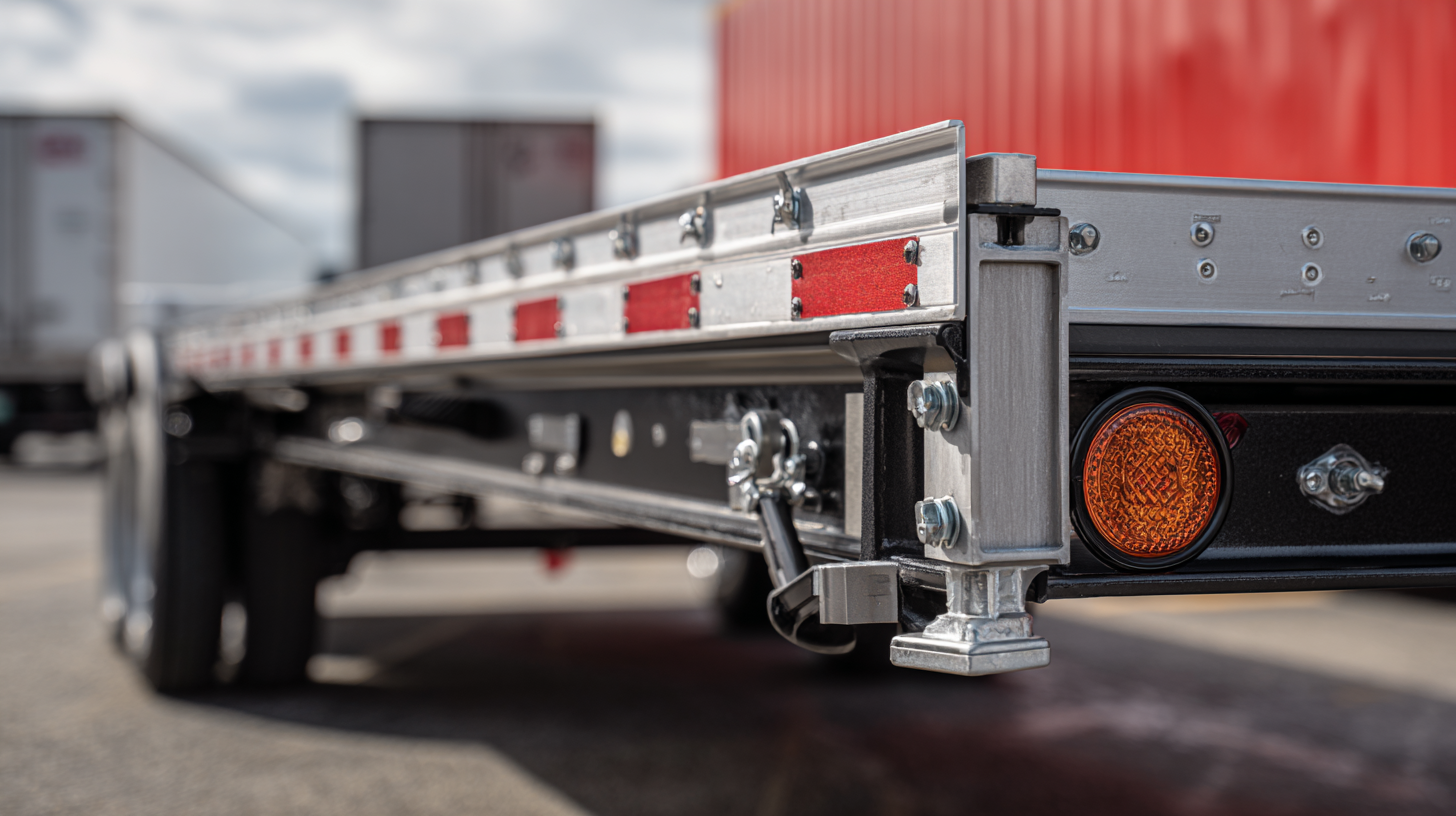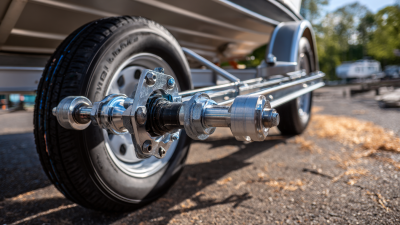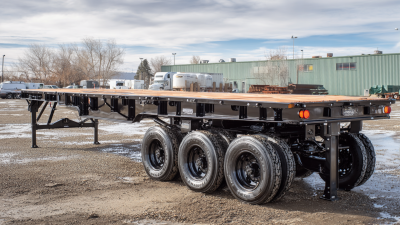How to Choose the Right Trailer Tongue for Optimal Load Distribution and Stability
When it comes to towing a trailer, the importance of selecting the right trailer tongue cannot be overstated. A well-chosen trailer tongue is crucial for optimal load distribution and stability, ensuring a safe and effective towing experience. Many factors come into play when deciding on the perfect trailer tongue, including the type of trailer being towed, the weight of the load, and the specifications of the towing vehicle. By understanding the different options available and their respective advantages, you can make informed decisions that enhance both the performance of your trailer and your safety on the road. This guide will explore essential aspects to consider, helping you navigate through the complexities of trailer tongues to achieve an ideal balance that promotes stability and efficiency during towing.

Understanding Different Types of Trailer Tongues for Load Distribution
When selecting a trailer tongue, understanding the different types is crucial for optimal load distribution and stability. Trailer tongues typically fall into three main categories: straight tongues, adjustable tongues, and gooseneck tongues. Straight tongues are commonly used for lighter loads and provide a simple, direct connection to the towing vehicle. However, for heavier loads, adjustable tongues offer versatility, allowing users to modify the hitch height to achieve the best alignment and load distribution. Data from the National Trailer Dealers Association (NTDA) reveals that improper tongue height can result in up to a 25% decrease in towing stability, emphasizing the importance of choosing the right type.
Gooseneck tongues are designed for heavy-duty applications, commonly seen in larger trailers used for transporting equipment or livestock. According to a report by the Trailer Safety Coalition, properly configured gooseneck hitches can improve weight distribution over the axle, enhancing stability and reducing sway. This design allows for a greater payload capacity and is particularly beneficial when hauling substantial loads. Understanding the strengths and limitations of each type of trailer tongue is essential for achieving optimal performance, ensuring safety on the road, and prolonging the lifespan of both the trailer and the towing vehicle.
Key Factors Influencing Load Stability in Trailer Design
When selecting the right trailer tongue, understanding the key factors that influence load stability is vital. First and foremost, load distribution plays a critical role. According to the National Association of Trailer Manufacturers, an ideal load distribution ratio is 60% on the trailer's tongue and 40% toward the rear. This balance helps in maintaining stability during transport, preventing sway and potential accidents. By ensuring the tongue weight is within 10-15% of the total trailer weight, users can significantly enhance handling and braking efficiency.
Another crucial element is the trailer’s axle placement. A study by the Trailer Safety Association indicates that optimal axle positioning can reduce tire wear and improve overall stability. Ideally, the distance between the axles should be proportionate to the load being carried; longer trailers benefit from additional axles to distribute weight more evenly. Furthermore, the hitch design can also influence stability—using a weight distribution hitch can enhance balance by redistributing the truck's and trailer's weight, improving traction, especially during inclines and sharp turns. Ensuring all these factors are addressed leads to a safer and more efficient towing experience.
How to Choose the Right Trailer Tongue for Optimal Load Distribution and Stability - Key Factors Influencing Load Stability in Trailer Design
| Factor | Description | Impact on Stability | Recommended Value |
|---|---|---|---|
| Tongue Weight | The downward force exerted at the hitch point | Critical for reducing sway and ensuring proper load balancing | 10-15% of total trailer weight |
| Coupler Type | The mechanism used to connect the trailer to the tow vehicle | Affects ease of hitching and the integrity of load transfer | Standard, adjustable, or specialized couplers |
| Material | The substance from which the trailer tongue is made | Impacts strength, weight, and durability | Steel or aluminum for optimal strength |
| Length | The distance from the coupler to the end of the tongue | Impacts maneuverability and weight distribution | 3 to 5 feet typically |
| Design Style | The overall shape and configuration of the tongue | Affects weight balance and center of gravity | Straight vs. drop-down styles based on load type |
Calculating the Ideal Tongue Weight for Optimal Performance
When it comes to ensuring optimal performance while towing, calculating the ideal tongue weight is crucial. Tongue weight, which is the downward force exerted at the coupling point of the trailer, should typically be about 10-15% of the total trailer weight. For instance, if your trailer weighs 6,000 pounds, aim for a tongue weight between 600 to 900 pounds. This balance of weight distribution significantly affects both stability and handling, reducing the risk of trailer sway.

Tips: Always check your vehicle’s towing capacity and ensure that the combined weight of your vehicle, load, and trailer does not exceed this limit. When loading, place heavier items closer to the axle of the trailer, as this aids in maintaining the tongue weight within the desired range. Additionally, employing a weight distribution hitch can help redistribute some of the weight to the front axle of the tow vehicle, enhancing control during transit.
Remember, proper maintenance of your towing equipment is equally as important. Regularly inspect the trailer hitch and tongue for wear and tear, as a secure connection directly contributes to towing stability. Efficient towing not only ensures safety on the road but also extends the lifespan of both your vehicle and trailer.
Material Choices for Trailer Tongues: Strength vs. Weight Considerations
When selecting the right trailer tongue for optimal load distribution and stability, one of the key considerations is the material used. Steel, aluminum, and composite materials each have unique strengths and weaknesses that can influence both performance and weight. Steel is often favored for its durability and strength, making it suitable for heavy loads. However, it can add significant weight, which may affect the overall towing capacity and stability of the vehicle when fully loaded. On the other hand, aluminum offers a lighter alternative that still provides adequate strength for moderate loads, but may not be suitable for extremely heavy towing tasks.

Additionally, understanding the entire vehicle and trailer combination is crucial. The gross combined weight must be well within the limits of the towing vehicle's capacity, including the weight of the trailer tongue itself. A well-chosen trailer tongue ensures effective load distribution along the hitch, preventing issues such as swaying or instability during towing. Ultimately, the right material choice not only impacts the strength and performance of the tongue but also plays a critical role in safe and efficient towing operations.
Industry Standards and Guidelines for Trailer Tongue Safety and Efficiency
When selecting a trailer tongue, adhering to industry standards and guidelines is crucial for ensuring safety and efficiency. The first step in this process is understanding the weight capacity recommended by governing bodies, such as the National Association of Trailer Manufacturers (NATM). They provide specifications that dictate the maximum load a trailer tongue can handle, which helps prevent accidents caused by overloading. It’s essential to choose a tongue that aligns with your trailer’s total weight and distribution to maintain balance during transport.
Moreover, the design and materials of the trailer tongue also play a significant role in load distribution. Utilizing high-quality materials, such as steel or aluminum, can enhance durability and performance. Additionally, the tongue length and height should be carefully considered to keep the trailer level during towing. These measurements directly impact stability and cornering behavior, significantly affecting the entire towing experience. By following established industry guidelines, users can achieve optimal load distribution and ensure a smooth, safe journey.
Optimal Trailer Tongue Load Distribution
This chart illustrates the recommended load distribution percentages for various types of trailer tongues, ensuring optimal stability and safety during transportation.
Related Posts
-

Mastering the Purchase of the Best Aluminum Trailer A Complete Guide for Global Buyers
-

Trailer Kit Showdown: An In-Depth Comparison of Top Brands and Their Performance Metrics
-

7 Best Tips for Choosing the Right Boat Trailer Axle
-

Advantages of Choosing a Quality Pontoon Boat Trailer for Your Water Adventures
-

Exploring Innovative Alternatives for Boat Trailer Parts to Enhance Your Marine Experience
-

Solutions for Optimizing Your Utility Trailer Parts for Maximum Efficiency
